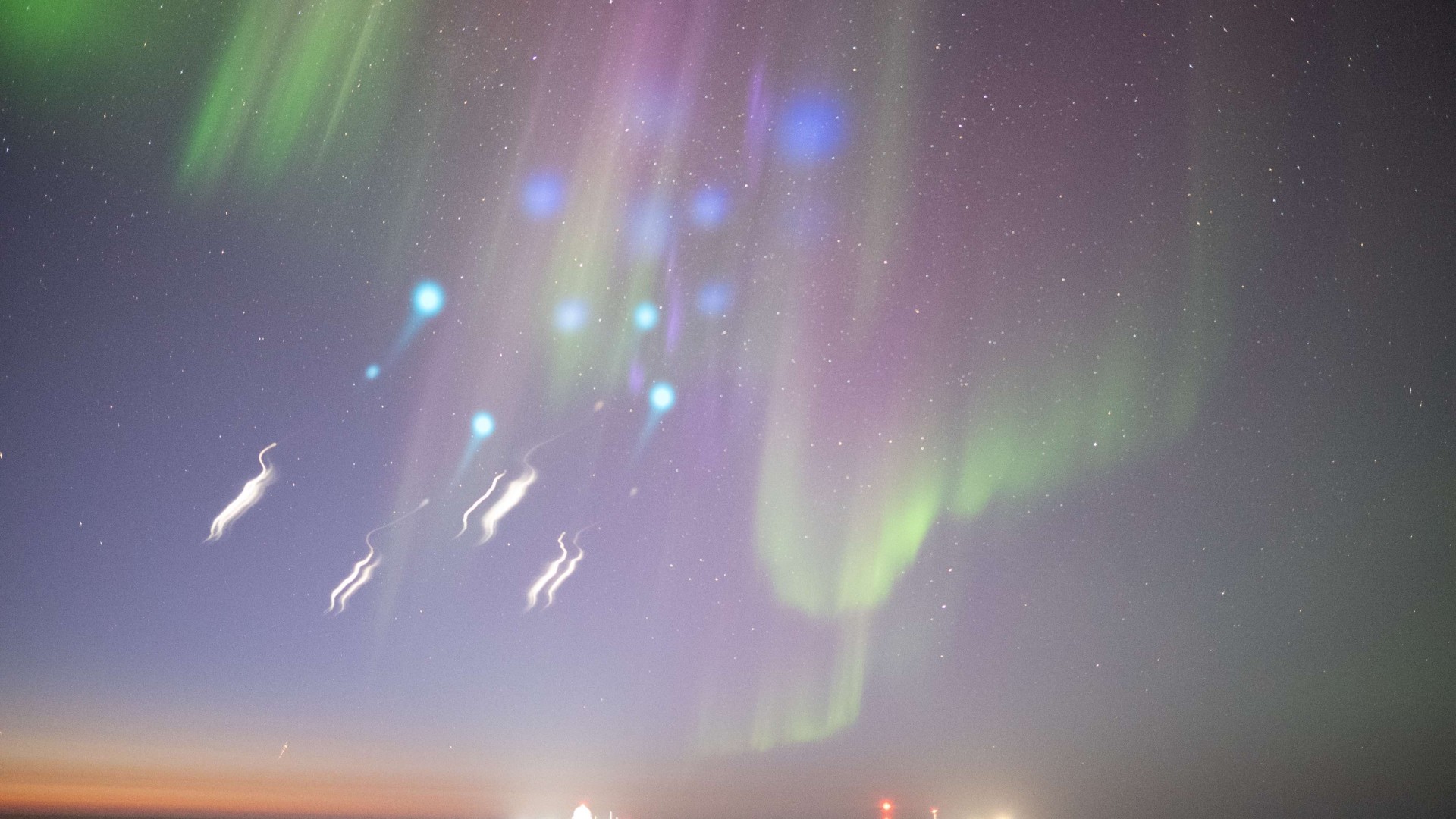Now Reading: NASA Rockets Light Up Alaskan Skies with Stunning Aurora Displays
-
01
NASA Rockets Light Up Alaskan Skies with Stunning Aurora Displays
NASA Rockets Light Up Alaskan Skies with Stunning Aurora Displays

Rapid Summary
- Event: Two NASA rockets were launched into auroras above Alaska on March 25,2025,as part of the AWESOME (Auroral Waves Excited by Substorm onset Magnetic Events) experiment led by the University of Alaska Fairbanks.
- Objective: to study how auroras impact Earth’s upper atmosphere and ionosphere, utilizing vapor tracers to measure atmospheric winds and flows of charged particles.
- Details:
– The first rocket was a Terrier-Improved Malemute (42 feet long), measuring magnetic perturbations caused by auroras during substorms.- The second rocket was a four-stage Black Brant XII (70 feet long), releasing vapor tracers during intensified auroral substorms.
- Key outcomes: Researchers observed disruptions in Earth’s thermosphere stability caused by energy from the aurora. Measurements will aid in improving space weather forecasting.
- Ground Stations: Researchers across multiple sites in Alaska captured visuals essential for analysis from Utqiagvik, Toolik Lake, Eagle, venetie, and others.
- Upcoming Launch: A third Terrier-Improved Malemute rocket is scheduled for launch before April 6 if motor repairs are completed; it focuses on further vapor tracer experiments under optimal dawn conditions.
Indian Opinion Analysis
The NASA-driven AWESOME experiment presents an intriguing development for space science globally with implications that could indirectly benefit India’s advancements in space weather prediction systems. By focusing on interactions between charged solar particles and Earth’s magnetic field – phenomena also visible as geomagnetic storms – this research offers crucial insights particularly relevant given India’s ambitious satellite programs reliant upon stable atmospheric conditions.
For India specifically, understanding disruptions in Earth’s thermosphere might enhance protective measures against solar-related disturbances perhaps impacting communication satellites or navigation systems like IRNSS (Indian Regional Navigation Satellite System). Observing advanced foreign collaborations can also inspire increased domestic partnerships between educational institutions and ISRO to foster scientific innovation at similar levels.Read more: NASA launches rockets into Auroras creating breathtaking lights






















